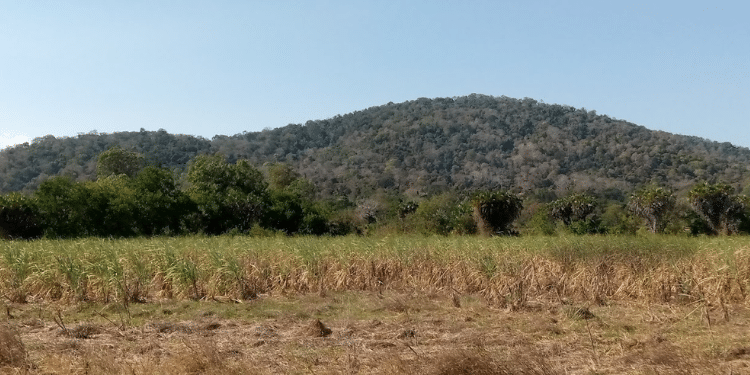Cooking should be enjoyable and support life, but not so for hundreds of women and girls in rural Kenya, who often undergo the ordeal of using firewood to make food for their families.
Rosalia Amweya’s story tells it all. Her health suffered heavily, she says, from the smoke she constantly inhaled for hours daily while cooking on a traditional three-stone cooking stove, oblivious to the danger she was exposing herself to.
Like most women from Ichingo village in Kakamega county, where she lives, the 73-year-old grandmother says the deadly carbon monoxide she inhaled made her life miserable.
“I started coughing incessantly and feeling weak. I could no longer stay in the kitchen for long enough to enjoy preparing meals for my family as before due to respiratory problems,” she says.
Amweya, who at first did not know the dangers of cooking with firewood, says, “I am asthmatic, and the smoke inhalation only made the situation worse. The frequency of my hospital visits increased rapidly, and the doctors were worried about me.”
She learned more about her condition when an NGO researched the impact of smoke inhalation in households in her area.
“They tested the amount of smoke in people's (mainly women) lungs and found out that many of us had been affected by the smoke we had been inhaling over the years as we cooked with firewood," she says.
However, Amweya’s visits to the doctor for treatment have reduced since she started using improved cooking stoves.
Thanks to modern cookstoves, Amweya can continue her other business as a mother and grandmother without worrying that the children will get sick or burned while cooking.
“With the improved stove, my grandchildren can cook even when I am not around. Even the men can now stay in the kitchen when their wives cook because there is no smoke,” she says.
With the improved stove, my grandchildren can cook even when I am not around. Even the men can now stay in the kitchen when their wives cook because there is no smoke
ACUTE, CHRONIC EFFECS
Dr Yubrin Gachemba, a Cardiology Fellow at NHS Grampian in the UK, said the effects of air pollution on the human body could be acute or chronic, depending on the duration of exposure and underlying conditions.
"It can be acute, especially if someone has an underlying respiratory illness, such as asthma," she said.
"They can then have an acute exacerbation of symptoms, like shortness of breath or frequent asthma attacks, but also just the irritation can happen from indoor biomass exposure."
She said the chronic effects are more concerning and could range from chronic respiratory illnesses like chronic obstructive pulmonary disease (COPD) to damage to the lungs and heart, increasing the risk of shock.
Gachemba said exposure to some of these hydrocarbons or nanoparticles can trigger the accelerated ageing of body organs.
The constant use of traditional cooking methods, such as open fires or rudimentary stoves, produces high levels of smoke and other harmful emissions.
This leads to respiratory and other health problems, particularly for women and children who spend much time in the kitchen.
About half of the global population and 90 per cent of rural households, almost all in developing countries, rely on solid biomass for cooking and heating.
The Ministry of Energy indicates that solid fuels remain the leading cooking energy in rural and peri-urban areas, where 68 per cent of residents rely on traditional biomass fuels.
These solid fuels are typically burned indoors in poorly ventilated structures and mostly inefficient stoves or open fires.
A review of household air pollution and biomass use in Kenya, published in the Frontier Science journal in 2022, showed that one in 10 women and children experienced coughing, wheezing, eye problems and headaches due to the use of wood fuel in Western Kenya.
The study showed that 86.9 per cent of the improved cook stoves contribute to a reduction in harmful emission levels compared to the traditional three-stone stove.
Gachemba encouraged using clean biogases, though she noted that Kenya is still far from achieving this since more than 60 per cent of the population still relies on biomass and lacks access to clean energy due to poverty.
The cardiologist says indoor air pollution damages the airways, lungs and other body parts.
"When firewood, kerosene or plastic is burned, gases like carbon monoxide are released, which can cause acute poisoning by binding to red blood cells and preventing normal perfusion and gas exchange, potentially leading to death," she says.
"Some of these combustion materials, when released, go into the lungs and are inhaled as part of the gas. They can find their way into the bloodstream and provide a basis for complications such as lung cancer, heart disease and stroke."
Ventilation is essential when using biomass for cooking. The windows should be open for air circulation, Gachemba advises.
Other measures include promoting good housing models and improving social determinants of health, such as education, access to healthcare and employment so that people can afford better energy sources.
BUSINESS VENTURE
Since discovering the benefits of modern cookstoves in 2016, Amweya decided to do something to help women in her community transition to improved cookstoves to save their health and lives.
She joyfully welcomes us to her tidy kitchen, furnished with three modern improved jikos (modern cook stoves).
She says she likes keeping her kitchen clean and ready to welcome any visitor.
You can comfortably sit in the kitchen while she prepares a meal without fear of inhaling smoke from the firewood.
This is because she has replaced the conventional three-stone cooking stove she had used for many years.
To realise her resolve to assist fellow women in her village, she attended crucial training by the German Agency for International Cooperation (GIZ) to learn more about the improved jikos and how to make and instal them.
GIZ gave the group modern jikos to instal in their kitchens and use to improve their moulding skills.
Armed with this knowledge, she shared the idea with the Ichingo Women Self-Help Group members.
She says the group, which was initially started to support widows in the community, became involved in making and installing the improved jikos, which was a turning point for many of them.
"More than seven years ago, we started doing it as a business, and we could charge people a small fee for the installation," she adds.
"But one was required to buy the materials needed to instal the improved jiko. We later built a workshop for the smooth working of our improved cookstove-making initiative."
The group started with 30 women but the number increased to 200 in a span of two years as the improved jikos gained popularity in the area.
They decided to split the number into three groups based on the different locations so as to accommodate more women.
Amweya says within five years, they had installed more than 1,000 stoves and that all the women had put up an improved cooking stove in their kitchens.
Amweya recalled with nostalgia the struggles many women went through before this since they wholly depended on their husbands for support.
"But when we started this project, we could fend for ourselves and even pay school fees for our children. Now we get to educate other women on making the improved jikos as an income-generating venture."
Amweya has since retired from installing the improved jiko in other people's homes and instead recruited Kaudensia Malova, her widowed daughter-in-law.
"When my husband passed away, I was worried about how I would support my six children since he had been the breadwinner," Malova says.
"But my mother-in-law was kind enough to train me to mould the jikos and instal them in people's homes for a fee. I took over from my mother-in-law, who is now aged and cannot travel to instal the jikos, and we earn money from it," she said.
Depending on the size of the improved cooking stove, they charge between Sh2,000 and Sh3,000 for each jiko, including installation.
She makes between Sh8,000 and Sh10,000 monthly, which she complements with earnings from her farming.
HIGH INSTALLATION COST
The high cost of installation is a significant limitation. Thus, despite their availability and huge benefits, modern cookstoves remain out of reach for poor people, Malova says.
Consequently, women and young children in most rural areas of Kenya remain exposed to high levels of indoor air pollution every day, resulting in complications like lung cancer and child pneumonia, leading to premature deaths.
Children, women and older people who sleep in smoke-filled huts or use traditional kitchens fitted with three-stones are the most affected.
According to the Institute for Health Metrics and Evaluation (IHME), there is a growing shift from biomass fuels to cleaner fuels, such as LPG, ethanol and electricity for domestic cooking.
However, most households in developing countries continue to use biomass fuels notwithstanding the availability of cleaner fuels.
This is attributed to high household poverty levels in most developing countries, which prohibit the adoption of cleaner fuels in households.



















